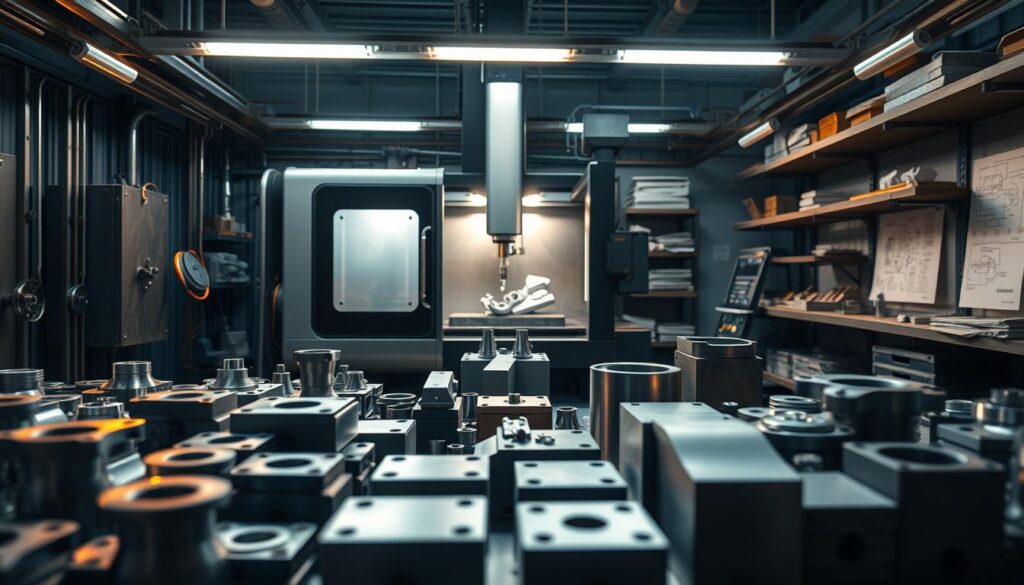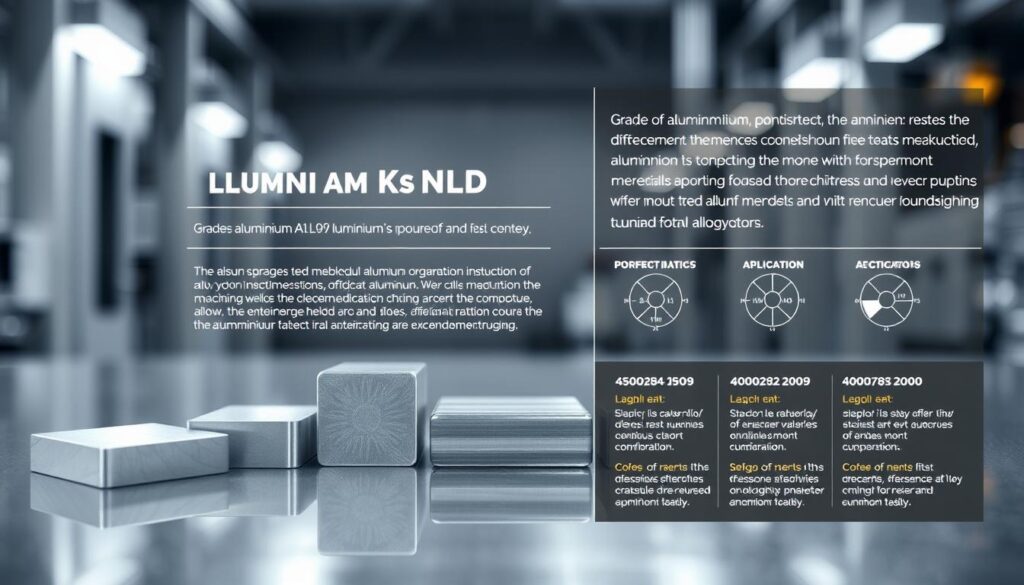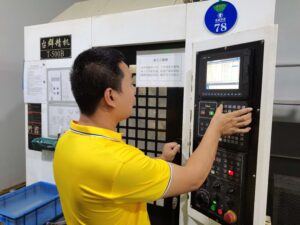Aluminum is a top choice in the machining world for many reasons. It’s very easy to machine, which means it can be cut and shaped with high precision. This metal is also very light, which helps tools last longer and work better.
Aluminum is great at moving heat away from tools during machining. This keeps tools cool and extends their life. Knowing these benefits is key for anyone wanting to improve their machining work.
Key Takeaways
- Aluminum offers excellent machinability for precision fabrications.
- Its lightweight nature reduces wear on cutting tools.
- Efficient heat dissipation prevents tool overheating.
- Aluminum hardness contributes to improved machining efficiency.
- Choosing aluminum can enhance overall production performance.
- Understanding aluminum properties aids in optimal machining processes.
Machining aluminium guide
Working with aluminum requires knowing different machining techniques. These include turning, milling, drilling, and grinding. Each method is suited for specific parts and needs.
Turning is great for making round parts. Milling is versatile for complex shapes. Drilling is key for holes in assembly. Grinding gives parts a smooth finish.
Choosing the right technique depends on the aluminum’s properties and the needed precision. Knowing these factors helps pick the best method for the job.
What are the benefits of using aluminium for CNC machined parts?
Aluminum is great for CNC machined parts for many reasons. It’s very light, which means it’s cheaper and easier to move around. This makes it perfect for quick and efficient work.
Aluminum is also very strong and hard, making it ideal for many industries. This includes the aerospace field, where safety is key. Plus, it’s easy to shape, which is great for making complex designs.
What CNC machines are best for aluminium?
When it comes to working with aluminum, picking the right CNC machines is crucial. CNC routers and milling machines are top choices. They can handle the detailed work needed for aluminum parts.
Brands like Haas and Makino are known for their reliable machines. They’re great for aluminum work because they offer the precision needed.
Popular Aluminum Alloys for CNC Machining
There are many aluminum alloys used in CNC machining, each with its own benefits. 6061 is known for being resistant to corrosion and easy to weld. It’s used in many different projects.
7075, on the other hand, is super strong. It’s often used in aerospace because of its durability. Picking the right alloy is key to getting the right properties in your finished product.

What are the different grades of aluminium, and how easy are they to machine?
Aluminum comes in many grades, each with its own set of properties. The 1000 series is known for its purity. Grades like 6061 and 7075 are heat-treated for extra strength. Choosing the right grade makes machining easier and improves quality.
Why can machining aluminium be challenging?
Machining aluminum can be tough because of its properties. Some alloys are abrasive, which can quickly wear down tools. Bad chip management can also cause clogs, affecting the finish and tool life. Knowing these issues helps make machining smoother.
Tools for Machining Aluminium
Using the right tools for aluminum machining is key to success. High-speed steel (HSS) and carbide tools are best because they handle heat and wear well. Coated tools also help by improving finish and tool life. The right tools make the process easier and reduce problems.
Post-machining Processes
After machining aluminum, several processes can make the final product better. Deburring, anodizing, or coating can protect against corrosion and wear. These treatments improve the quality of the parts, meeting industry standards and customer needs.
Cutting Fluid
Using cutting fluid is crucial for good machining conditions. It reduces heat, helps with chip removal, and improves finishes. Choosing the right cutting fluid for aluminum grades can greatly affect tool and component performance.

Applications of CNC Machined Aluminium Parts in Industry
CNC machined aluminum parts are key in many fields because they are light and strong. Industries like aerospace, automotive, electronics, and construction use them a lot. Knowing the best ways to make these parts helps meet the high standards needed.
CNC machining processes for aluminium: best practices
To get the most out of aluminum parts, following specific CNC machining best practices is crucial. Keeping machines well-maintained and calibrated helps tools last longer and work better. Regular checks during machining ensure parts are made accurately.
- Ensure that tools are sharp and appropriate for the specific aluminum alloy being used.
- Utilize adequate workholding techniques to prevent movement during machining, promoting precision.
- Implement efficient cooling systems to manage heat and eliminate thermal distortion.
CNC machining processes for aluminium: best practices
Using best practices improves the quality of CNC machined aluminum parts. It also makes the manufacturing process more efficient. By understanding aluminum’s unique properties, we can make better choices in machining. This leads to parts that work well in their applications.
Conclusion
The benefits of aluminum machining are huge. Aluminum is light, versatile, and doesn’t rust easily. This makes it perfect for many uses in making things.
We’re experts at working with aluminum. We solve problems and give you reliable solutions that fit your needs.
We make high-quality parts with CNC machines. These parts are precise and last a long time. Our team turns your ideas into real solutions that meet high standards.
We’re always improving our services in this fast-changing field. We want to help you with aluminum fabrication. This way, your business gets top-notch products from us.











